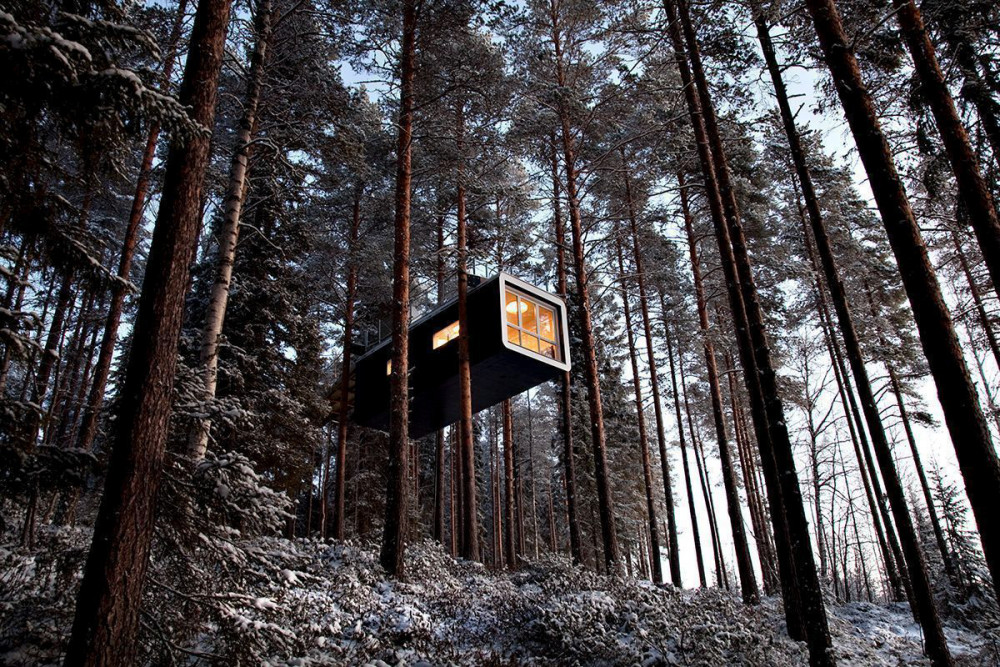- Home
- Articles
- Architectural Portfolio
- Architectral Presentation
- Inspirational Stories
- Architecture News
- Visualization
- BIM Industry
- Facade Design
- Parametric Design
- Career
- Landscape Architecture
- Construction
- Artificial Intelligence
- Sketching
- Design Softwares
- Diagrams
- Writing
- Architectural Tips
- Sustainability
- Courses
- Concept
- Technology
- History & Heritage
- Future of Architecture
- Guides & How-To
- Art & Culture
- Projects
- Interior Design
- Competitions
- Jobs
- Store
- Tools
- More
- Home
- Articles
- Architectural Portfolio
- Architectral Presentation
- Inspirational Stories
- Architecture News
- Visualization
- BIM Industry
- Facade Design
- Parametric Design
- Career
- Landscape Architecture
- Construction
- Artificial Intelligence
- Sketching
- Design Softwares
- Diagrams
- Writing
- Architectural Tips
- Sustainability
- Courses
- Concept
- Technology
- History & Heritage
- Future of Architecture
- Guides & How-To
- Art & Culture
- Projects
- Interior Design
- Competitions
- Jobs
- Store
- Tools
- More
Modern vs. Traditional Fireplaces: Which Adds More Value?

Fireplaces have long held a special place in our homes, offering warmth, ambiance, and a focal point for gatherings. In today’s real estate landscape, they’ve evolved beyond mere heating sources, becoming symbols of style and comfort.
However, choosing between traditional wood-burning, convenient gas, or modern electric fireplaces can significantly impact property value.
This article delves into traditional and modern fireplaces, comparing them to determine which type holds the key to adding the most value to your home.
Table of Contents
ToggleThe Role of Fireplaces in Property Value
Fireplaces have played a significant role in homes throughout history, evolving from mere heating sources into integral design and lifestyle features. This section will explore how they influence property value.
Property Value Impact
The presence and type of fireplace can influence a property’s value. Here, we’ll delve into how different fireplace types can affect property appraisal and marketability:
-
Wood-Burning Fireplaces
Wood-burning fireplaces evoke a sense of nostalgia and classic charm, making them attractive to many buyers. While not as efficient as some alternatives, they can still provide cost-effective heating.
-
Gas Fireplaces
Modern gas fireplaces offer comfort with remote control operation and no need for wood storage or cleanup. They are more energy-efficient than their wood-burning counterparts, which can appeal to eco-conscious buyers.
-
Electric Fireplaces
Electric fireplaces are easy to install and can be placed in various locations, including apartments or homes without chimneys. They often serve as design focal points, providing visual appeal without needing real flames. Tarrant County Texans like to hire services performing heat pump installations in Arlington to make sure their homes stay energy-efficient and comfortable year-round. These professionals ensure that the heat pump is properly integrated into the home’s heating and cooling systems, providing optimal performance without excessive energy costs.

The Traditional Wood-Burning Fireplace
First, let’s get into the characteristics of the wood-burning fireplace.
Charm and Appeal
Traditional wood-burning fireplaces evoke a multisensory experience. The crackling sounds of burning wood and the gentle flicker of flames create a cozy ambiance that’s hard to replicate.
These fireplaces often serve as a focal point in a room, adding a touch of classic elegance to the décor. The dancing flames create a captivating visual spectacle.
Potential Downsides
Traditional fireplaces require regular cleaning and maintenance. The chimney must be swept to remove creosote buildup, and ash removal can be messy. UK homeowners living in the east like to hire a local chimney sweep in Essex who can manage both routine cleanings and more complex flue inspections. This ensures their fireplaces remain efficient and compliant with safety standards year-round.
Wood-burning fireplaces pose safety risks, including the potential for chimney fires, sparks escaping the hearth, and carbon monoxide emissions if not properly vented.
Wood-burning fireplaces pose safety risks, including the potential for chimney fires, sparks escaping the hearth, and carbon monoxide emissions if not properly vented. In case of an unfortunate incident, hiring a burn accident attorney may be needed to handle claims and protect legal rights. Prompt action can make a significant difference in securing fair compensation.
Impact on Property Value
Well-maintained and aesthetically pleasing wood-burning fireplaces can add value to a property. They can be a sought-after feature for homebuyers seekin a traditional touch.
On the other hand, if the fireplace is outdated, in poor condition, or doesn’t meet current safety standards, it can detract from the property’s value and appeal.
The Convenience of Gas Fireplaces
Traditional gas fireplaces offer a level of convenience that’s hard to match. Here’s a closer look at why they’ve become popular among homeowners.
Instant Ignition and Control
One of the primary benefits of traditional gas fireplaces is the ability to start and stop them quickly. With just a flip of a switch or the press of a remote control button, you can have a fire burning in seconds without the need for kindling or matches.
Gas fireplaces allow you to regulate the flame’s intensity and heat output to suit your comfort level.
Safety Features
Unlike traditional wood-burning fireplaces, gas fireplaces eliminate the risk of sparks or embers escaping and potentially causing a fire hazard. This makes them an excellent choice for homes with children and pets.
Most modern gas fireplaces have safety features like automatic shutoff in case of gas leaks or irregularities, providing peace of mind.
Influence on Property Value
Gas fireplaces are often seen as modern and attractive features in homes. They can enhance your property’s appeal to potential buyers, particularly those seeking convenience and aesthetics.
They are generally more energy-efficient than wood-burning ones. This can translate into lower heating bills, which may be an attractive selling point.
The Modern Appeal of Electric Fireplaces
Electric fireplaces have gained immense popularity in recent years thanks to their modern appeal and features that cater to contemporary lifestyles.
Aesthetics and Customization
Electric contemporary fireplaces offer various flame effects that can be adjusted to suit your preferences. These realistic flames often include color, intensity, and speed options, allowing you to create the perfect ambiance for any occasion.
Limitations to Consider
While electric fireplaces convincingly mimic the appearance of flames, they lack the authenticity of real, crackling flames. Some individuals prefer the sensory experience of a wood-burning fire.
Electric contemporary fireplaces rely on electricity, so they won’t work during power outages unless you have a backup power source. This can be a drawback in regions prone to blackouts.
Impact on Property Value
Electric fireplaces align well with modern and minimalist interior designs. They often serve as focal points in contemporary homes, potentially boosting property value by adding a touch of sophistication.
Factors to Consider When Choosing a Fireplace
When it comes to selecting the right fireplace for your home, several crucial factors must be considered. Consider these aspects to make an informed decision.
Personal Preferences
Think about the architectural style of your home and your personal fireplace design preferences. Fireplaces, from traditional to modern, come in various types and can be made from different materials like brick, stone, or metal.
Decide on the type of fuel you prefer. Options include wood-burning, gas, electric, or ethanol. Each has advantages and drawbacks regarding convenience, cost, and environmental impact.
If you already have a fireplace, you can check out Brick Anew as they have a lot of products that will help you change the style without ripping it out and starting again.
Home Design and Layout
Consider the available space in your home. Some fireplaces may require more room for installation and ventilation, while others can fit into smaller spaces. Determine the feasibility of installing proper ventilation. Wood-burning fireplaces, for example, require chimneys for smoke and gas exhaust.
Budget and Resale Value
Set a realistic budget for your fireplace project. Costs can vary significantly depending on the type, size, and installation requirements. If you plan to sell your home in the future, consult with real estate professionals or appraisers to understand how a fireplace’s presence (or absence) may affect your home’s market value in your area.
Conclusion
The choice of a fireplace type is a decision that should align with your personal preferences, home design, and budget. Each type—wood-burning, gas, or electric—offers unique advantages and drawbacks.
To maximize property value, it’s crucial to consider the type, condition, and safety of the fireplace. A well-chosen and well-maintained fireplace can add warmth and value to your home.
illustrarch is your daily dose of architecture. Leading community designed for all lovers of illustration and #drawing.
Submit your architectural projects
Follow these steps for submission your project. Submission FormLatest Posts
Understanding Site Safety Footwear in Architectural Practice
Architecture is often discussed through drawings, models, and finished buildings, yet a...
General Arrangement Drawings in Architecture: The Backbone of Clear Design Communication
General Arrangement Drawings explained: what they are, when to use them, how...
The Ultimate Guide to Fencing in North Dakota: Choosing the Best Fence for Your Property
Watching a chain link fence twist in 70 mph winds near Minot...
Gaudí: Where Architecture Meets Science
Gaudí: Where Architecture Meets Science shows catenary arches, ruled surfaces, and biomimicry...












Leave a comment